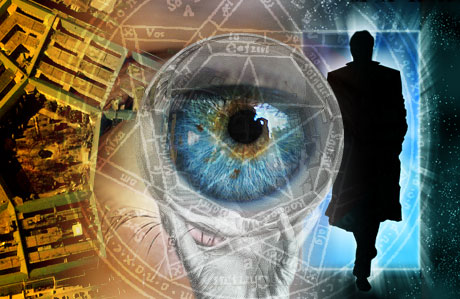 Eighteenth and nineteenth century physical science had completed and embellished the "golden age of a mechanistic and deterministic models of the universe" where the universe and its constituents are ruled by rigid interactive forces that can be measured, phenomena that can be predicted using mathematical tools, and where the universe or any system operating within it is made of the sum of its parts.
Eighteenth and nineteenth century physical science had completed and embellished the "golden age of a mechanistic and deterministic models of the universe" where the universe and its constituents are ruled by rigid interactive forces that can be measured, phenomena that can be predicted using mathematical tools, and where the universe or any system operating within it is made of the sum of its parts.
Light was thought to be an electromagnetic wave vibrating in an undetected, and later experimentally disproved media: "the ether", at certain rates of vibration that would define its color. It was part of the electromagnetic wave spectrum that allowed one to perceive an electromagnetic wave as heat, light , radio waves, or other electromagnetic radiations depending on the frequency of its vibrations. This spectrum had been well-defined by the equations of the English physicist James Clerk Maxwell in 1864.
Man's biology was reduced to a mechanical system albeit of extreme complexity, and thought was perceived to be but an epiphenomenon of the mechanical brain.
All this was very hygienic, logical, and comforting. It allowed to view the so-called invisible world of spiritual forces or entities as a personal unproven hypothesis, and permitted the justification of atheistic concept to be scientifically sound. Basically it allowed for purely atheistic politico-philosophies alike communism to find a sympathetic resonance within the "intelligentsia" and the masses.
It also gave a great mechanistic impetus and approach to the fields of biology, microbiology, psychology, neurobiology, and the allopathic technical mechanistic approach to the health sciences. Technology was "king" and the understanding of interactions between well-defined separated systems would bring the possible conquest of disturbances and imperfections in the "machinery" of biological entities.
Man having created a new religion called "science", which revered himself and his intellect, had the perception of having attained a Godlike control over nature.
By the end of 19th century the ultraviolet catastrophe - as it came to be known - put this whole hygienic view of the world in question, and the theory of "quanta" of Max Planck was introduced in 1900. The German physicist Max Planck introduced the notion of packets of energy that he called "quanta" in order to explain why the wavelength (color) of the radiation given off by heated objects did not rise in a continuous manner but in discontinuous spurts from value to value as they grew hotter. Danish physicist Niels Bohr, who was to become later one of the fathers of the "Manhattan Project" that developed the first US A-bomb during WWII, used in 1913 the theory of "quanta" of energy in order to prove that the whole world of atoms was full of "quantum" jumps. An electron could jump from one level of energy (so-called orbit) to another without appearing in-between these states. Discontinuity had been introduced in our equation of the universe!
CLICK HERE TO READ MORE

No comments:
Post a Comment